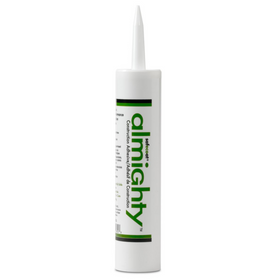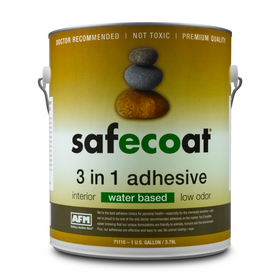
Retaining Wall Options: A Complete Guide
Last Updated: Apr 7, 2025When we think about non-renewable resources, the first thing that comes to mind is probably fossil fuels like oil, coal, and natural gas. The extraction and burning of these fuels have led to several dangerous ecological crises, including global climate change. However, the soil beneath our feet is perhaps one of the most valuable non-renewable resources that millions of people take for granted.
Why is soil a non-renewable resource? According to the most conservative estimates, it takes nature several hundred years to create just one inch of topsoil, with some estimates rising to 1,000 years. The slow cycles of vegetative growth and decomposition coupled with millions of years of geological formations have covered our earth with a thin layer of fertile topsoil. Topsoil allows us to grow the food we need to stay alive. Unfortunately, that thin layer of life-giving soil is quickly depleting due to erosion from inadequate land management techniques.
Though many people blame industrial, agricultural techniques for the massive losses in topsoil and soil fertility, erosion can occur anywhere. This Rise article offers a few simple tips on stopping erosion in your yard for homeowners everywhere. Retaining walls are another great strategy for reducing soil runoff and erosion. In today's article, we look at the importance of soil erosion and offer a simple guide for designing the best retaining walls for the property around your home.
The Issue of Soil Erosion
About 10,000 years ago, our ancestors transitioned from a predominantly hunter and gatherer society to a more settled agrarian society. This transition allowed the human population to grow, cities and urban centers to emerge, and other aspects of cultural evolution to develop. However, the yearly tradition of plowing the soil and exposing it to the wind, rain, and elements eventually led to massive soil erosion and degradation. Some leading historical scholars consider that past civilizations' and empire's rise and fall depended on how the soil was treated.
Today, soil erosion and degradation have also quickened with the advent of industrialized agriculture and other major land-use industries. According to some estimates, we are currently losing about 24 billion tons of fertile soil due to erosion every year. Per capita, that amounts to almost three and a half tons of topsoil per person per year. Because fertile soil takes so long to replenish naturally, deteriorating our lands has made this element a non-renewable natural resource.
The issue of soil erosion is essential to the construction of sustainable and resilient civilizations. If you are not a farmer, you might wonder if there is anything you can do. First and foremost - make an effort to buy from local farmers committed to regenerative growing techniques.
What else? The soils around our homes are probably not of the best quality. Suburban and urban housing projects usually require large machinery that removes the topsoil's delicate layer and compacts the subsoil around the entire property during the building process. So, commit to improving the soil in your yard. As a result, homeowners can increase their resiliency, reduce the possibilities of flood damage, capture carbon dioxide from the atmosphere, and reduce soil runoff. Retaining walls are one of the best ways to care for the soil in your yard while simultaneously protecting your home's foundation and structure.
Table of Contents
- What is a Retaining Wall?
- Who Needs a Retaining Wall?
- What Types of Retaining Walls Are There?
- Pros and Cons of Different Types of Retaining Walls
- What Sustainability Aspects Should I Look for in the Best Retaining Wall?

What is a Retaining Wall?
A retaining wall is a rigid wall-like structure designed to support soil laterally (from side to side). The main objective of retaining walls is to keep the soil at different levels on the two sides of the walls while stopping the natural erosion process on steep slopes. Retaining walls have been used for thousands of years by farmers who grow crops on steep slopes. The picturesque terraces of Machu Picchu or the curving contours of Asian rice fields are examples of retaining wall technology that has been in place for thousands of years. Today, retaining walls are regularly used in large projects, such as in building highway overpasses.
For residential homes, retaining walls generally serve two primary purposes:
- Protecting the foundation of a home when built on a steep slope, and
- As a beautiful compliment to the yard, garden, and property.

Who Needs a Retaining Wall?
Any homeowner can build retaining walls, even with a relatively small yard with slate, decorative brick, or other natural stone types. Retaining walls can accentuate the façade of your home, add value to your property, and give you a beautiful and functional space to experiment with your permaculture garden.
However, retaining walls are necessary for homes built on sloping lands. For example, your yard might require a retaining wall if any of the following three conditions occur:
- You notice substantial erosion occurring "downstream" from your home. If gullies and small ravines begin to form, the erosion can increase quickly, especially in areas where heavy rains are frequent. Even if the gulley seems to be far enough from your home, building a retaining wall to fix the gulley and stop further erosion can protect your foundation.
- Your home is downhill from the fault lines of soil. During heavy rains or earthquakes, landslides or mudslides tend to occur where soil fault lines naturally happen. Even if you don't notice any current erosion above your home, a landscaping contractor can tell you where the soil fault lines above your home might be. You should invest in a retaining wall if your home is directly below a soil fault line.
- Your home foundation is becoming exposed. Erosion around your home can occur due to dysfunctional gutter systems or inefficient landscaping. If erosion is exposing your foundation, this could lead to severe structural problems requiring significant renovation costs. A small retaining wall built around your home's foundation is an excellent way to protect it.
What Types of Retaining Walls Are There?
Retaining walls for residential homes and properties can be made from different materials, both synthetic and natural. For a more aesthetic quality, choose natural stone, slate, or decorative brick. For homeowners wanting to maximize the retaining wall's strength on a steep slope, concrete blocks reinforced with steel rebar are another option. In some climates, retaining walls made from timber might also be an option worth considering.

Pros and Cons of Different Types of Retaining Walls
Below, we offer a quick rundown of the pros and cons of the most common retaining walls on the market today.
Building Materials
Shop high-performance building materials that are vetted for benefits to your health, your pocketbook, and the planet.

AFM Safecoat Almighty Adhesive Case of 12
AFM Safecoat
In Stock

AFM Safecoat 3 in 1 Adhesive
AFM Safecoat
In Stock

Quickscrews Cabinet Install Screws
Quickscrews
In Stock

AutoSlide Automatic Sliding Door System
Autoslide
Out of Stock
2 Colors

Autoslide Smart Tag Pet Door Kit
Autoslide
Out of Stock
2 Colors

AutoSlide Elite iLock Smart Tag Pet Door System
Autoslide
Out of Stock
2 Colors

Quickscrews Pan Head Pocket Hole Screws
Quickscrews
In Stock

Autoslide Elite Smart Tag Pet Door Kit
Autoslide
Out of Stock
2 Colors

Autoslide Motion Activated Pet Door System
Autoslide
Out of Stock
2 Colors

Quickscrews Square Flat Head Wood and Particle Board Screws
Quickscrews
In Stock

Wood or Timber Retaining Walls
Retaining walls made from timber will generally be the least expensive option. You can expect to pay around $15 per square foot installed. They can also be beautiful and complement homes that have similar exterior cladding. On the downside, timber retaining walls will generally not last as long because of rotting issues. In areas with prolonged wet seasons, the wood will decompose faster. It might not offer enough structural strength for heavy, water-logged soils. In yards with timber retaining walls higher than three feet, proper bracing will also be required to provide sufficient structural support. Wood retaining walls are generally best in areas with relatively dry climates.

Poured Cement or Rebar-Reinforced Cinder Block Retaining Walls
This retaining wall is generally the quickest to build. It also offers excellent strength and can blend well with homes looking for a more modernist feel when built correctly. However, these retaining walls do require a large amount of cement. Thus, they will increase the carbon footprint and the embodied energy footprint of your home. Homeowners can expect to pay about $20 per square foot for this retaining wall.
What Sustainability Aspects Should I Look for in the Best Retaining Wall?
When designed correctly, retaining walls can offer aesthetic, protective, and structural advantages to your home. They can also be a part of a more holistic, sustainable design. When choosing the best material for your home's retaining wall, consider sourcing materials as locally as possible. All retaining walls will be made from heavy materials. So, shipping from far distances will significantly increase the embodied energy of the structure. If you live near a rock quarry, then natural stone might be your best bet.
Also, consider incorporating recycled or salvaged material into your retaining wall if they are locally available. Chunks of concrete from roads and sidewalks that are being rebuilt take up enormous space in landfills. These are great (and often free) resources for a retaining wall.

Make an effort to have your landscaper or contractor build your retaining wall on contour with your yard's slope. There are very few instances of "straight lines" in nature, and there is no reason why retaining walls should necessarily be linear. The subtle curves present in your landscape's slope are beautiful to look at and will also be more adept at preventing soil erosion.
Tobias Roberts
Tobias runs an agroecology farm and a natural building collective in the mountains of El Salvador. He specializes in earthen construction methods and uses permaculture design methods to integrate structures into the sustainability of the landscape.


